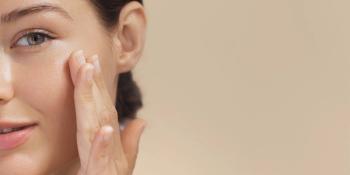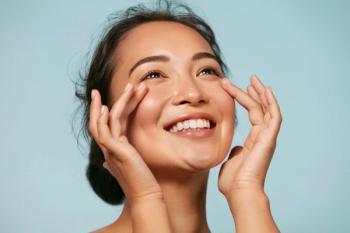
Cosmetics: Inside and Out
Nutritional ingredients are now commonly touted in topically applied cosmetics, while dietary ingredients are being marketed in ingestible beauty products-many of which claim to deliver skin care benefits.
Lines between food, cosmetics, and nutritional supplements are continually blurring. More consumer products are being called nutraceuticals, nutricosmetics, and beauty beverages. Nutritional ingredients are now commonly touted in topically applied cosmetics, while dietary ingredients are being marketed in ingestible beauty products-many of which claim to deliver skin care benefits.
Ingredient suppliers say, however, that so far this year, demand for ingestible beauty products in the United States hasn’t been as high as the industry had expected. In Europe and Asia, new launches of ingestible beauty products, especially beverages infused with collagen, have been steadier. The majority of American consumers don’t seem convinced that an ingestible beauty product really works, especially when a supplement claims to have antiaging or other skin care benefits.
“There is a greater focus now on positioning inner health, lifestyle, and ingestible beauty products as crucial components of the beauty regimen and necessary complements to topical skin care products-but I’m not sure it’s a widespread concept yet,” says Irina Barbalova, head of beauty and personal care research, Euromonitor International.
Brien Quirk, director of research and development, Draco Natural Products (San Jose, CA), has been hearing occasional requests for dietary supplement ingredients that offer benefits such as hair growth and UV protection, but not so much for antiaging. “The market is either developing very slowly, or its growth has declined relative to the expectation of a few years ago.”
However, he adds, “It is worth the effort for more personal care and cosmetic companies to pursue supplements as a skin care product because the strongest antiaging and skin health benefits can only be actualized by the concept of beauty from the inside out.”
BioCell Technology’s (Newport Beach, CA) vice president of scientific affairs, Joosang Park, PhD, agrees that the market for ingestible beauty products is still developing in the United States. “Americans appear to be entrenched in the thought that beauty comes from expensive topical cosmetics that promise immediate skin improvement,” he says. “Those who doubt that nutricosmetics actually work believe that skin products have to be topical.”
Growing science behind nutricosmetics will help generate interest, suppliers say. “Studies continue to substantiate the benefits of ingestible beauty ingredients on the skin, which will hopefully help to change the consumer’s perception,” Park says.
Jocelyn Mathern, technical health specialist, Frutarom USA (North Bergen, NJ), agrees. “We’re often asked for ingredients that have science behind them, especially related to antiaging benefits. The science behind our Collactive [ingredient] has been a key factor in its success,” she says. Collactive contains collagen and elastin peptides (derived from hydrolyzed fish protein) and has shown to reduce wrinkles in woman taking 2 g/day.
Alda Brandao, product manager, cosmeceutical/nutricosmetic division at P.L. Thomas (Morristown, NJ), feels the timing is right for a surge in ingestible beauty products because more-thorough studies are now complete. “Before, the interest was there, but the science wasn’t. Now we can back up claims with evidence, and more product developers at cosmetic companies are noticing,” she says.
In addition to publicized research indicating an ingredient’s effectiveness, another way a consumer might be enticed to try a beauty supplement is by seeing it sold alongside a more-traditional topically applied product. Several brands are doing this. Noah’s Naturals’ 4-step Anti-Aging Skin Care System includes four products that contain an acai complex. Three of the products are topical formulations; one is a powdered beverage mix in a stick pack. (One of the powder’s active ingredients is Collactive.)
Perricone MD has also been using this marketing strategy for several of its brands. Perricone MD’s Pigment Corrective System contains a dietary supplement and a skin cream, both containing the branded ingredient Pycnogenol. (Read the sidebar on page S-8 for more information on this ingredient’s skin care benefits.) The products claim to renew collagen and brighten the skin. They are packaged in a kit, conveying that the products should be used together as a regimen for best results.
Nivea’s Goodbye Cellulite range is another example. Launched in 2008, the products are notable for their claims of tackling the “orange peel” appearance caused by cellulite through the use of both a nutricosmetics pill and a cream.
“The Goodbye Cellulite capsules and gel both contain L-carnitine, reputed to aid in dissolving fat. These kinds of products seem to be proving more palatable to consumers who are skeptical about nutricosmetics. They combine the topically applied products that women are already accustomed to using with a less familiar method,” says Carrie Lennard, industry analyst, Euromonitor International.
Park says that marketing a topical and ingestible product together as a two-step regimen is an excellent marketing strategy. “We believe consumers will more readily adopt a holistic approach to skin care, wanting to use both an ingestible and a topical product for faster, more-enhanced skin benefits,” he says.
Marketing topical and ingestible beauty products as a system may not only be a good way to introduce consumers to supplements; it may increase an ingredient’s effectiveness-or at least appear to do so.
“One of the major sticking points for consumers regarding nutricosmetics/nutraceuticals has been the time delay, often approximately a month, before they can expect [to see] visible results,” says Lennard. “This requires a leap of faith that can be too great for many potential consumers. The advantage of a combined approach is that it often gives a more immediately visible benefit until the pills begin to have an effect.”
Most suppliers are in agreement that using a combination of a topical with an ingestible, both formulated with the same ingredient, won’t necessarily increase that ingredient’s benefits to the skin-but the two types of formulations will most likely deliver different types of benefits.
Active ingredients may more effectively deliver benefits to the skin when used both topically and orally, says Quirk; however, it depends on the ingredient. “Oral use allows actives to permeate through the body, reaching all of the skin cells. Topical use could concentrate this more effectively where needed most-but in a practical sense, it would not reach all areas of the skin.”
Brandao supports the idea of marketing both types of beauty products, ingestible and topical. “Products taken orally deliver long-term benefits, and the results will stay, rather than washing off with a cream. But the benefits of topicals are important, too, to protect the skin against the elements,” she says.
Horphag Research’s director of scientific communications, Frank Schonlau, PhD, also advises not to forget about the power of a topically applied product. “The skin’s great advantage is that it can be directly supplied with key nutrients. While a supply of nutrients to the skin via the bloodstream is crucial, topical application allows elevated concentration of particular individual components locally.”
Read
Read
Newsletter
From ingredient science to consumer trends, get the intel you need to stay competitive in the nutrition space—subscribe now to Nutritional Outlook.





